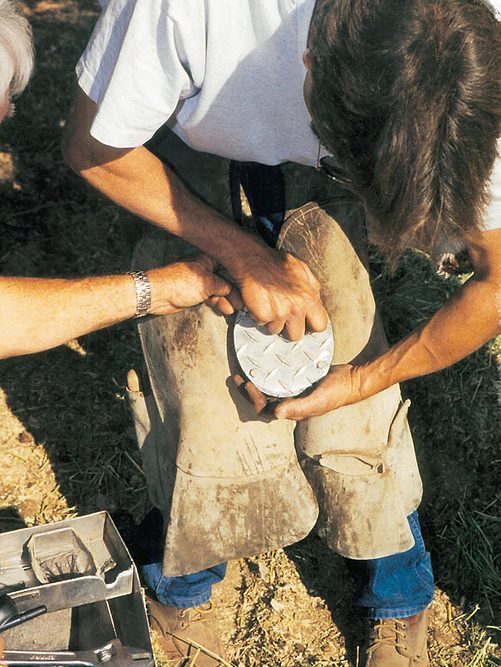American Farriers Journal
American Farriers Journal is the “hands-on” magazine for professional farriers, equine veterinarians and horse care product and service buyers.

TEAMWORK PAYS. California veterinarian Gary Stangeland lends advice and aid to farrier Brian Gnegy in securing a hospital plate on a laminitic horse.
While many shoers indicate their relationship with equine vets is fine, nearly everyone agrees that working together on shoeing problems depends on how willing each person is to listening to other ideas and opinions.
Results from our recently completed American Farriers Journal “Farrier Business Practices Survey” indicate 53 percent of farriers frequently consult with equine veterinarians on foot problems. Another 40 percent of farriers sometimes work with vets while 7 percent rarely do.
But what was really interesting was looking at the correlation between how often farriers consult with vets and a higher shoeing income. As you will see from the accompanying box, full-time farriers who work frequently with vets earned an average of $16,621 extra in yearly income.
During an in-depth session last winter with a half-dozen farriers and equine vets, the benefits of the team approach to shoeing came through loud and clear.
Al Kane learned a great deal about the shoeing business from farriers while going to vet school in Virginia and working in a private equine practice.
“By working closely with farriers, I got away from the idea of writing shoeing prescriptions and telling them what was needed because I quickly learned they didn’t like that approach,” says the veterinarian with the U.S. Department of Agriculture’ s Centers for Epidemiology and Animal Health in Fort Collins, Colo.
“Instead, I’d tell…